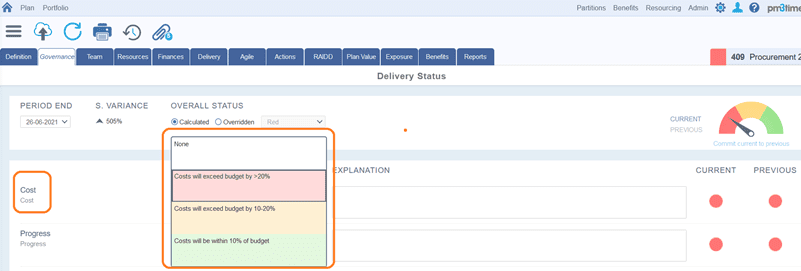I am sure many of you have been in the situation where a project has been seemingly going along nicely and then all of a sudden it goes from Green for all RAGS (*Red, Amber, Green) to Red for one or all RAG indicators. If this is the case you may have what is called a watermelon project, ie. Green on the outside but red on the inside. The reality is that it is a red project masquerading as green. Why does this come about?
There are, in our experience, three reasons why watermelon projects exist:
Firstly, there is a culture in the organisation that either looks very negatively on a project with one or more red RAG status. This culture is counterproductive. Highlighting a project as red is a positive step compared to either hiding the red or having the Panglossian view that it will be alright on the night. If the project manager has categorised their project as red, this allows for the sponsor or the stakeholders to help the project team take corrective action and ‘plan a road to green’. Without this intervention the project may start to go off the rails even more spectacularly.
Allocating a traffic light indicator to a project can be a subjective endeavour. What is red to one person could be green to somebody else. For example, one person may determine that the project is red if the budget is likely to be exceeded by 10%; another may consider this project to be red only if the budget is forecasted to be exceeded by 25%.
Organisations need to objectively define what is meant by red, amber, and green. This allows the project manager to assess the RAG rating of their project. This objective setting of red projects also helps stakeholders and sponsors who may be involved in many projects. With a subjective RAG rating, there is no consistency. With an objective RAG rating for cost, for example, ‘25% over budget = RED’, the stakeholders will know what red means.
In the screenshot of PM3 below, our award-winning PPM tool, you can see that each RAG rating is objectively defined. This helps consistency of RAG reporting across the organisation.

A watermelon project can occur if the project manager is either fooling themselves or deliberately hiding the fact that there are serious problems with the project. This could be related to the culture of the organisation or simply that the project manager is deliberately hiding the true status of the project. This approach is not only ill-advised for the project manager, but it may also end up costing the organisation significant money and resources. Eventually, it can become impossible to hide the true red status of the project, and the later the true status is realised the more cost and resources are needed to bring the project back on track.
Watermelon projects are hiding the true status of projects. It is important that projects are assessed honestly and objectively so that proper decisions regarding the project are taken.
It can be hard to spot a watermelon project, but PM3, our PPM tool, can help ensure projects are objectively assessed so if you see a green project, it really is a kiwi fruit and not a watermelon!

Our products help you deliver successful change programmes and projects by always focusing on the overall business outcomes. Find out how our products can help you.
Tell me more Watch a DemoLast month David Walton, our MD, spoke to Public Sector Focus about the major challenges facing orga...
Read more >Has your project RAG status suddenly turned green a mixture of all RAG indicator? You may be dealing...
Read more >Here you will find how RAGs play a crucial role in both project reporting and organizational leaders...
Read more >